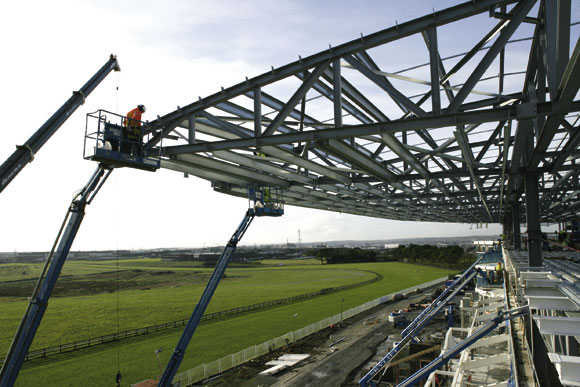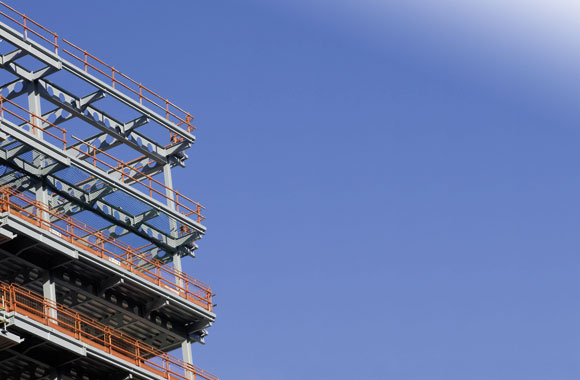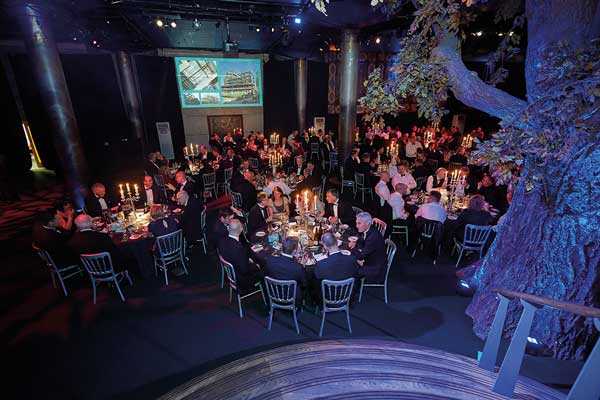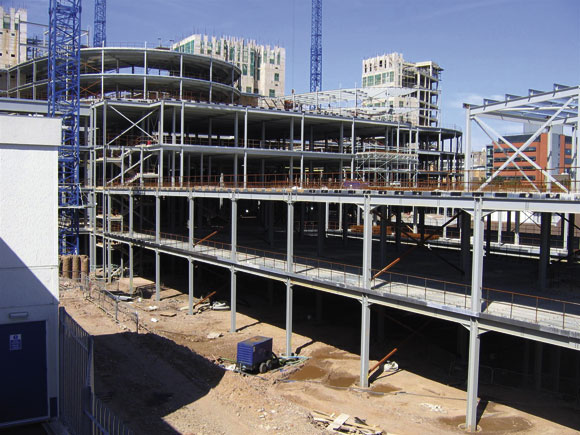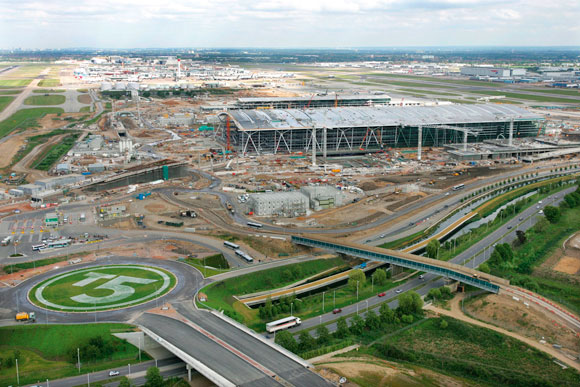Technical
The case for steel – The safety solution
In the second part of our Case for Steel series Nick Barrett explains why steel construction is the safety solution. Inherently easy site erection is one reason why steel construction sites are safer places to work.
Designers putting safety first need to consider whether a project can be safely executed, and since constructional steel is inherently safer than other framing materials steel is increasingly the solution of choice.
Steel is safer for a wide range of reasons. Starting with the design process, in-house design teams at steelwork contractors will share their special knowledge of steel structures by working with structural engineers and architects to develop steel framed solutions that enhance a project’s safety case.
Steelwork is an off-site manufactured, pre- engineered quality assured product that arrives on site when it is needed, ready for erection. Pre-planning of on-site operations is much easier with steel. The accuracy of the fabricated product delivered to site means that errors that could generate site hazards are minimised.
This accuracy is achieved by the widespread use of sophisticated software driven computer numerically controlled fabrication equipment. 3D models of steel frames are routinely created, helping with detailed planning of erection procedures. Planning is further aided when unorthodox or complex fabrications are involved by trial erections before delivering to site. Risk can be removed from site activity by this process.
The accuracy of modern steelwork makes possible high levels of productivity on site, without the sort of undue rush that can give rise to unsafe behaviour. The shorter and more predictable construction programme advantages of using
steel in fact take pressure off other site activities, helping them to be executed more safely as well. The accuracy of steel has almost totally eliminated the need for re-work, and means fewer erectors are needed on site. Far less temporary works is needed than with other framing systems.
Weather causes relatively few problems for steelwork as much of the work has already been carried out in the dry conditions of the fabricators’ workshop. Steel components can be pre-assembled or fabricated into modules either off-site or at low level, which reduces many potential hazards.
Greater certainty of safe site practice is achieved because steelwork is standardised in a way that lends itself to repetition of site tasks. Steelwork contractors are specialists with highly trained and experienced skills in design, fabrication and erection. The site erection teams are highly specialised and skilled, and hold recognised qualifications.
Erection programmes for steel frames are short, involving relatively few on-site personnel and so less exposure to potential hazards. A typical steel erection team would comprise four or five trained, competent erectors – as opposed to as many as 20 for an equivalent in-situ concrete frame.
Steel frames can be self stable so the full strength of the material can be immediately available. There is no delay while the steel gains strength and no risk of placing reliance on an under-strength component. Already erected parts of the structure provide safe access to working positions, for use by other trades if required. Decking for composite slabs provides a safe platform after installation as well as protection to lower storeys, and access stairs can be immediately supported from columns and beams as required.
At the end of a steel framed building’s useful life it is easily and safely demountable, the sections being either re-used elsewhere or recycled to provide steel of the original quality.
The steel construction sector provides an extensive range of free advice and Health and Safety Guidance covering design and workshop practice. BCSA publishes an extensive range of Codes of Practice for the erection of:
- Low Rise Buildings
- Multi-storey Buildings
- Metal Decking & Stud Welding
- Steel Bridges
- Steelwork in Windy Conditions
- Work at Height during Loading and Unloading and also Health & Safety Guides covering:
- On site
- In the workshop
- In the office
For Managers & Supervisors For further information please visit: www.SteelConstruction.org
Steel construction – the qualified industry
Steel construction is carried out by specialist site erection teams who hold recognised qualifications under several safety related schemes:
- An accredited qualification, Constructional Steelwork NVQ level 2, is available to steel erectors, metal deck installers and studwelders.
- The Register of Qualified Steelwork Contractors (RQSC) classifies all participating firms according to the type of work they are competent to undertake and the size of contract that they can resource and manage.
- The Safe Site Handover Certificate identifies key site conditions to be checked before erection starts in order to minimise site risks.
- The UKAS accredited Steel Construction Certification Scheme offers a Health and Safety Certification service, which is an audit certification to OHSAS 18001 specifically designed for steel construction.
- The Safety in Steel Construction service provides the ‘competent person’ requirement of the management of Health and Safety Regulations, as well as a helpline and inspection services.
- Using steel reduces site based activity
- Less on-site congestion due to fewer site personnel
- Off-site fabrication eliminates many on-site activities and so reduces potential hazards
- Reduces exposure to bad weather conditions
- There is virtually no steel waste arising on site, so no hazard generating on-site stores are needed, and there are fewer vehicle movements involved in handling waste
- Fewer delivery movements to site also reduces hazards
- Steel is not a hazardous material for workforces to handle
- There is no ‘use by’ date on steel as there is with concrete
Safety Innovations
A range of safety related innovations have been pioneered by steelwork contractors and are in common use on sites.
- Dedicated lifting points and lifting brackets are fabricated into steelwork
- Support frames that allow mobile elevating working platforms (MEWP’s) to be used on erected steelwork
- Edge protection systems can be attached to sections before erection
- The use of nets to protect following trades is widespread
- Composite floor decking can be cut off-site
- Bridge sections are now being sub assembled to include the access systems, significantly reducing work at height risks







